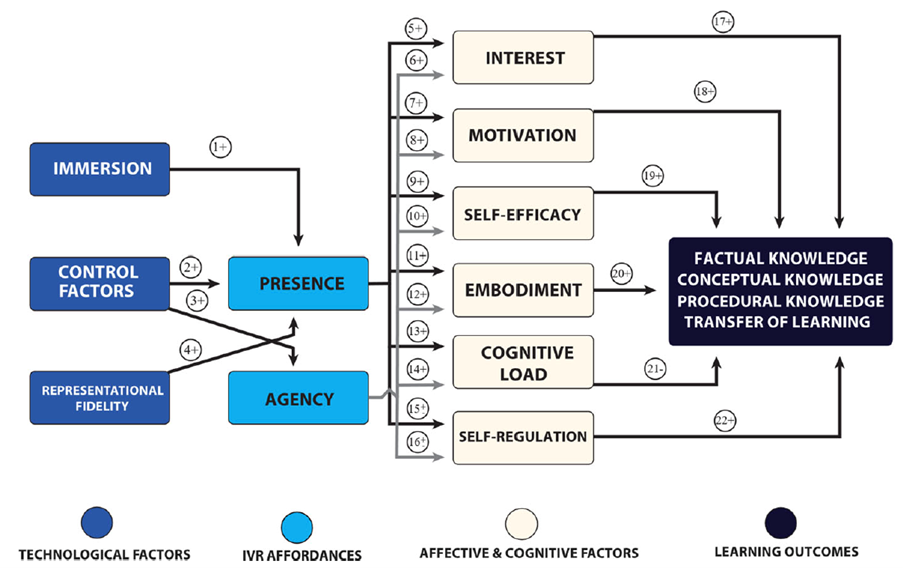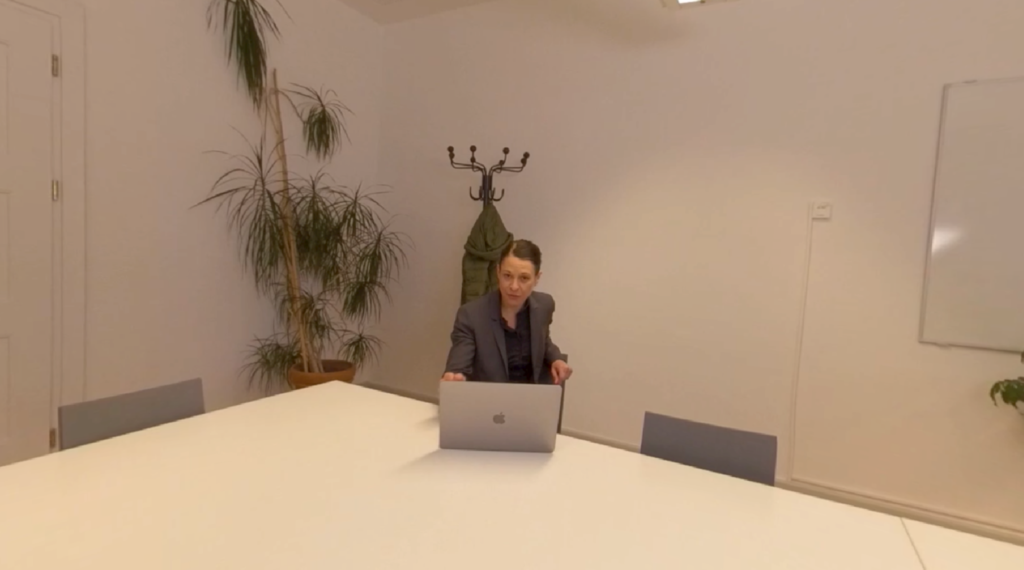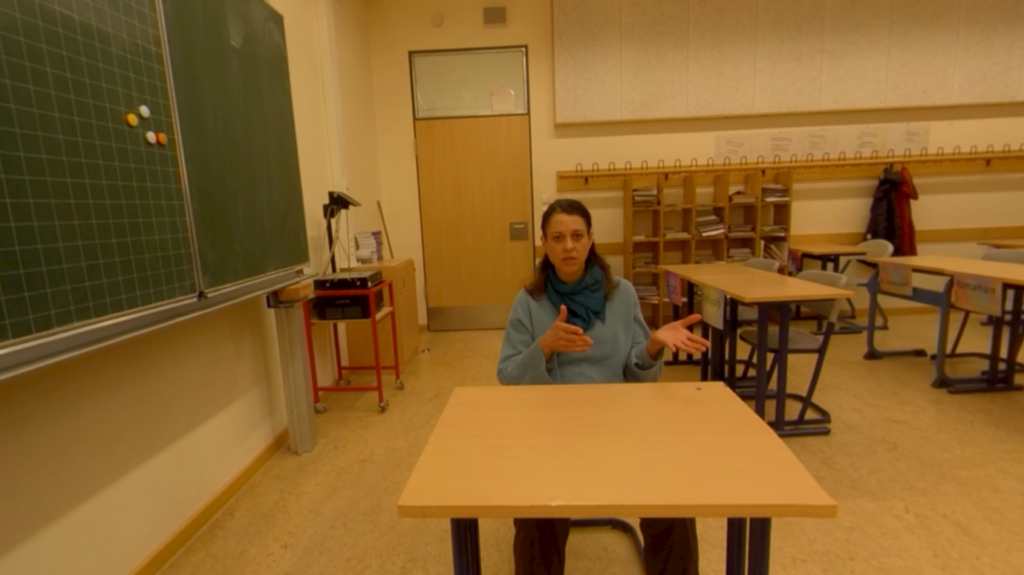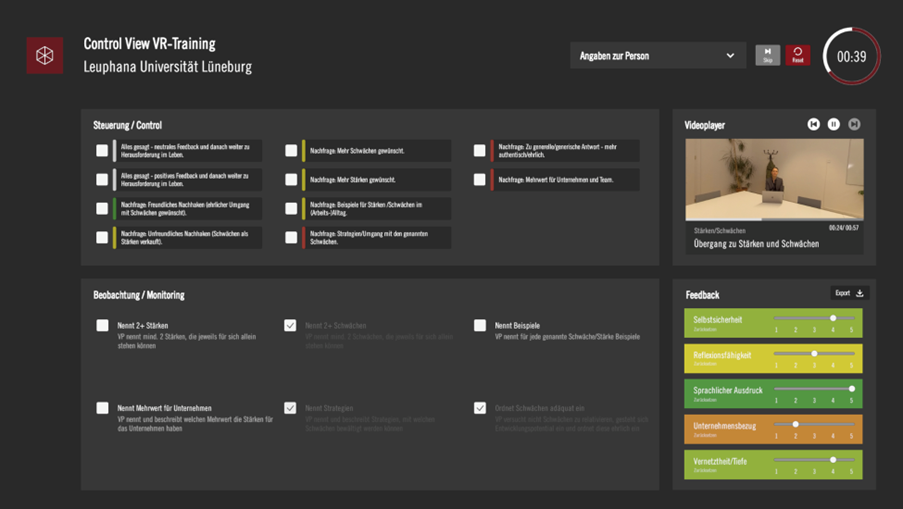By Hannes Petrowsky & Yannik Escher
In the last two years, we developed two VR applications for teaching interpersonal skills in higher education. This blog articles dives deeper into our goals, approach, and learnings, and showcases our final applications for students to succeed in their job interviews or having successful teacher-parent interactions in a school setting.
Virtual Reality in Higher Education
When it comes to challenging interpersonal interactions (such as job interviews or parent-teacher consultations), students and graduates may theoretically know a lot about adequate behavior, but might at the same time have difficulties to retrieve and apply this knowledge on the spot in a challenging situation. Their knowledge might not necessarily go hand in hand with the competence to analyze situations appropriately, to recognize and select alternative courses of action, to make appropriate decisions and behave accordingly, and to evaluate and reflect on these decisions.
To enhance this interplay of theory and practice, a holistic and professional university education should create opportunities for learning that, in addition to theoretical situation analyses, also enable experiential learning in the most authentic spaces possible. Traditionally, this practical aspect has been introduced into university education through different means, for example student role playing tasks, written case analyses, or in-class discussions of videotaped situations. While these formats may all foster skill development, they often have shortcomings regarding their realism or students’ situational agency. At the same time, they are typically time-intense, lack standardization, and fall short regarding the individual adaptivity and personal preferences (i.e., only a small subgroup of students benefit from the experience or other learning-specific characteristics hinder individual’s learning progress).
As a promising technological addition, Virtual Reality applications are increasingly used in higher education for a highly realistic and applied skill development of students and graduates. Students are equipped with head-mounted VR displays and develop interpersonal skills in virtual environments, where their learning is improved through increased immersion and situational presence (Makranksy & Petersen, 2021; see Fig. 1) while making room for potential mistakes without real consequences. Following this trend, the TP1 of the DigiTaL project is devoted to VR technology and seeks to explore the possibilities of VR for students’ interpersonal skill development at Leuphana University.

Goals, Approach, and VR Applications for Interpersonal Skill Development
Our goal was to develop and evaluate VR applications for interpersonal skill development for two distinct training cases: 1) parent-teacher consultations, directed at students in teacher education, and 2) job interviews and salary negotiations, directed at students in all majors. We want to provide the students with a highly realistic and standardized learning environment that prepares them for their future careers.
We started the application development in early 2022. We created the software using Unity3D as a game engine and C# to write scripts and implement functionalities. Next, we piloted the basic functionalities and created a proof-of-concept by the end of 2022, and evaluated students’ learning experiences in semi-structured interviews with 30 participants from Leuphana University. Based on their feedback, we further improved the VR applications. We used a 3D-360°-Camera (Insta360 Pro2) to record over 300 real-life scenes from job interviews and parent-teacher consultations with professional actors. We finished the development of our VR applications in October 2023.
In our trainings, students are equipped with Oculus Quest 2 VR-Headsets. The students experience a job interview / a parent-teacher consultation from first-person view in VR (Fig. 2, 3). They are confronted with different videotaped questions (e.g., “Please name two of your strengths and weaknesses that are relevant to this job”) and answer verbally, as if they physically were in this specific situation (i.e., presence). Based on their answer, the application instructor selects the next video by utilizing the point-and-click interface in the instructor view (Fig. 4). The instructor can ask additional in-depth questions if the student’s answer was deemed insufficient (e.g., only entailed strengths and no weaknesses), and can move to the next conversation phase if all questions are answered. After the training, students receive a standardized feedback document based on their answers and the instructor’s inputs in the instructor interface (e.g., perceived confidence).



Evaluation & Outlook
To test the effectiveness of our VR applications, we are in the process of evaluating the applications and their effects on students’ self-efficacy in a quantitative pre-/post comparison and compared to a control group with a text-based digital non-VR training. The feedback from our first evaluations is promising—students report a high amount of perceived presence, motivation, increased self-efficacy, and decreased anxiety after using our trainings. For now, we are very satisfied and hope that the training stimulates the motivational and learning-related aspects we are aiming for.
The process of creating these VR applications produced several learnings for our project team. Most importantly, we gained lots of technical skills in working with Unity3D, C#, the 3D-360° camera, and the VR headsets, which are crucial for programming a VR application. Further projects should plan with sufficient time and human resources for this technical skill development process. Also, the matching between the training goals and the required VR environment is time-intensive and needs to be planned carefully, prior to programming or video-taping.
After our evaluations are finished, our VR applications will likely be offered as a free download for interested students and other universities that seek to improve the interpersonal skill development of their students (e.g., career centers). We therefore hope that we can produce a sustainable VR application for broad use.


